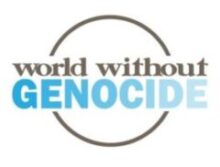I have a passport. According to the State Department, I’m among 43% of people in the United States with a passport, up from only 10% in 1994.
As of 2022, a United States passport allows visa-free travel to 186 countries, ranking the U.S. the 9th most powerful in the world on the Henley Passport Index of travel freedom. The U.S. is behind some European countries, Canada, Australia, New Zealand, Singapore and Japan.
I can travel the world with my passport, exiting and re-entering the U.S. with ease. But that passport also does something else: it validates my citizenship. That document with the blue cover is “proof” that I’m a legal citizen of the United States.
Why does citizenship matter?
The U.S. Constitution grants specific rights to its citizens.
- The right to freedom of speech and expression.
- The right to a fair trial.
- The right to free and unfettered media.
- The right to vote freely in open elections and to run for office.
- The right to worship in a free setting.
Without citizenship, these rights aren’t guaranteed. In addition, access to education, employment, housing, healthcare, and other elements of a full life are often limited. Even the opportunity for an official death certificate can be restricted to citizens.
How do we “prove” citizenship?
The following documents offer proof of U.S. citizenship:
- A passport.
- An original U.S. birth certificate.
- A Consular Report of Birth Abroad (FS-240).
- A naturalization certificate.
- A certificate of citizenship.
Proof must also include photo identification.
A driver’s license, social security card, or a voter registration card are not proof of citizenship.
According to the Center for Migration Studies of New York, “Roughly 218,000 U.S. residents are potentially stateless or at risk of statelessness. These groups live in all 50 states, with the largest populations in California (20,600), New York (18,500) and Texas (15,200).” They are stateless, without a country that they can call home. They are invisible in the fabric of life in this country. There are an estimated 11,200 stateless people in Minnesota, according to the study.
As Hannah Arendt, a Holocaust survivor, said, “Without a nationality, you have no right to have rights.”
How does someone become stateless, without citizenship anywhere on the planet?
People become stateless in several ways.
They can be born to stateless parents and therefore they can’t be registered at birth with citizenship, the situation for many Syrians and Palestinians. There can be gaps in nationality laws. Children born in a foreign country may become stateless if the country does not allow their parents to pass on nationality through family ties. A nation can discriminate based on ethnicity, religion, or gender, such as the Rohingya in Myanmar who have been denied citizenship since 1982. A state can cease to exist, which happened in 1991 with the dissolution of the Soviet Union and the end of citizenship in that country.
Six months ago, December 2022, CNN reported that the U.S. Department of Homeland Security was going to define statelessness and increase protections for stateless people in the U.S.
“A stateless person is someone who does not have the nationality of any country, according to the United Nations, but the U.S. doesn’t have its own definition, making it difficult for the federal government to understand the needs of this population,” the report noted. The goal is to assist stateless people in the U.S. with legal immigration status.
“DHS is committed to pursuing initiatives to enhance recognition of, and protections for, vulnerable populations, including stateless individuals within the United States,” Homeland Security Secretary Alejandro Mayorkas said in 2022. However, action has not yet been taken.
In 2014, the UN launched a program called #IBelong, with a goal to end statelessness in 10 years. Yet here we are in 2023 and the crisis is only getting worse.
The war in Ukraine has left many people without access to documentation and birth registrations in Russian-occupied regions. Russian war protestors who have fled from their country and come to the US and elsewhere are at risk of having their passports canceled. Uyghurs and other Chinese nationals in the U.S. wait for years for their asylum applications to be adjudicated, during which time their passports expire.
The UN states, “Everyone has the right to say ‘#I Belong.’ Today millions of people around the world are denied a nationality. They often aren’t allowed to go to school, see a doctor, get a job, open a bank account, buy a house, or even get married.”
Some stateless people are also refugees who have fled from natural disasters or wars. Not all refugees are stateless; many remain citizens of the countries from which they have fled. Both classifications are perilous and precarious.
The UN has passed three international conventions addressing refugees and stateless persons.
In 1951, the UN passed the convention relating to the Status of Refugees.
This deals with people who have fled from their country due to a well-founded fear of persecution for reasons of race, religion, nationality, membership of a particular social group, or political opinion and who may or may not also have been denationalized, meaning that they lost their citizenship and became stateless. This convention is the cornerstone of international refugee protection across the globe.
This convention gives rights to refugees such as access to the courts, to primary education, to work, and to getting a refugee travel document in passport form. Article 14 states that everyone has the right to seek in other countries asylum from persecution.
In 1954, the UN passed the Convention on the Status of Stateless Persons.
This convention defines and codifies statelessness and provides minimum standards of treatment for stateless people, such as freedom of religion and the right to education for their children.
Once the UN had the definition of statelessness, it became critical to reduce the numbers of people who were stateless.The 1961 UN Convention on the Reduction of Statelessness sets out practices for stateless people to become citizens.
There are 195 countries in the world.
- 144 countries ratified the 1951 Convention.
- 90 countries ratified the 1954 Convention.
- Only 71 countries have ratified the 1961 Convention.
The U.S. has not signed on to any of these conventions about refugees and statelessness. These are critical issues that must be addressed both globally and locally.
Ellen J. Kennedy, Ph.D., is the executive director of World Without Genocide and Adjunct Professor of Law at Mitchell Hamline School of Law, St. Paul.
is the executive director of World Without Genocide and Adjunct Professor of Law at Mitchell Hamline School of Law, St. Paul.



